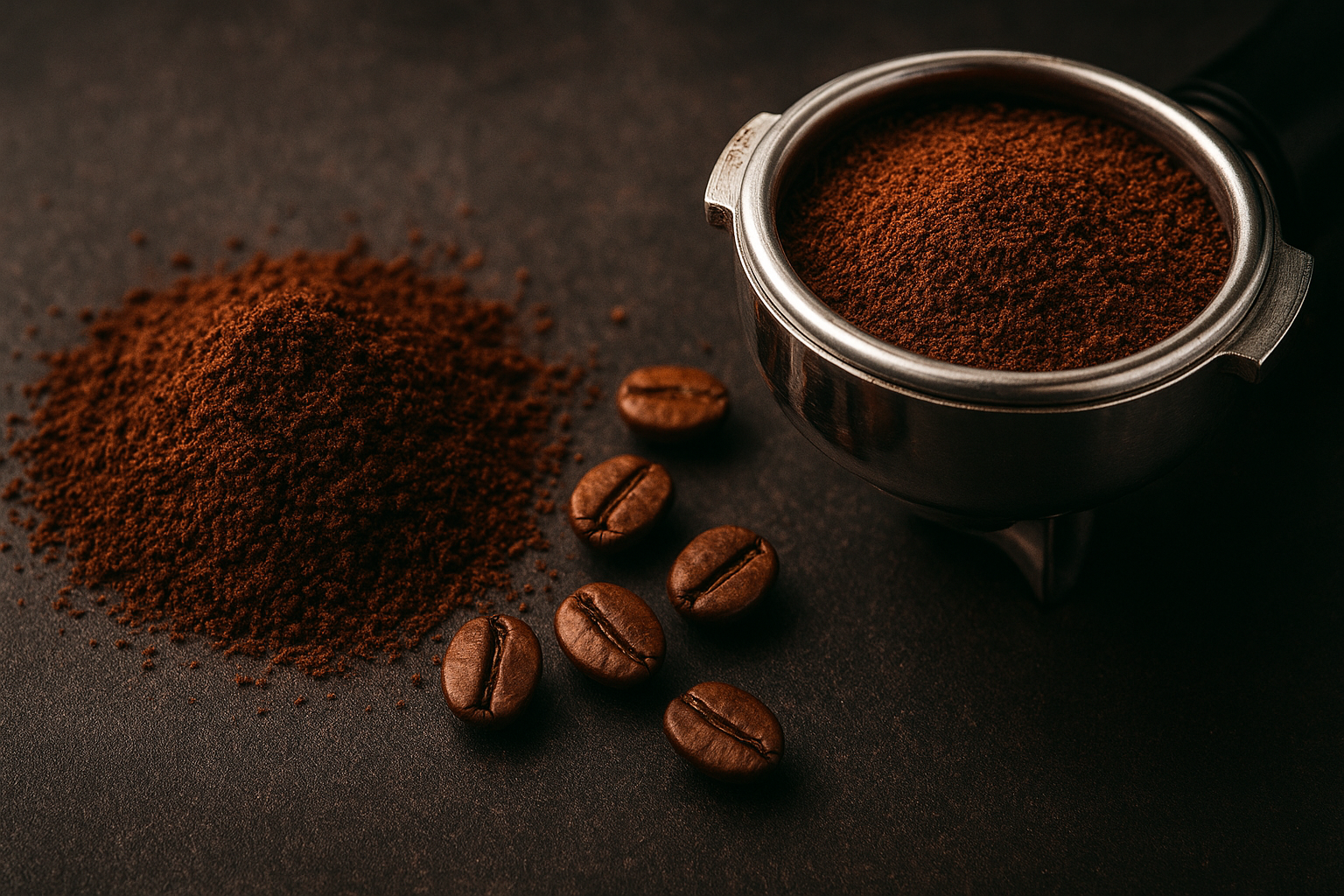The journey from coffee bean to cup is full of factors that shape flavor, but one of the most important—and often underestimated—is grinding. The grind size determines how quickly flavors are extracted during brewing, influencing sweetness, acidity, bitterness, aroma, and mouthfeel.
Even if you have the highest-quality beans and a perfect brewing method, an incorrect grind can ruin the final cup.
Understanding the science behind grinding and how it interacts with brewing methods is key to unlocking the full potential of your coffee.
Why Grinding Matters in Coffee
Coffee beans are essentially flavor vaults, storing complex compounds within their structure. When the beans are ground, the surface area increases dramatically, allowing water to extract flavors more efficiently.
A fine grind means more contact area and faster extraction, while a coarse grind results in slower extraction. Both under-extraction and over-extraction can negatively affect flavor.
Under-extracted coffee may taste sour and weak, while over-extracted coffee tends to be bitter and harsh. Finding the right grind size ensures balanced flavor and aroma in every cup.
Grind Size and Extraction Time
Extraction is the process of dissolving soluble compounds from ground coffee into water. This process is influenced by time, temperature, and grind size. A fine grind accelerates extraction because the water has more surface area to interact with.
However, too fine a grind can lead to over-extraction, producing bitterness and astringency. On the other hand, a grind that is too coarse can cause under-extraction, leading to weak flavor and excessive acidity.
This is why matching the grind size to the brewing method is essential.
Matching Grind Size to Brewing Method
Each brewing method has an ideal grind size to achieve the best balance of flavors:
- Espresso – Requires an extra-fine grind, similar to table salt, because the brewing time is very short (about 25–30 seconds) and water pressure is high. Too coarse and the espresso will be watery; too fine and it will taste bitter.
- Pour-Over (V60, Chemex, Kalita Wave) – A medium to medium-fine grind works best, as water flows through the coffee at a controlled pace. A grind that is too fine can clog the filter; too coarse can make the brew taste flat.
- French Press – Needs a coarse grind because coffee grounds steep in water for 4–5 minutes. Finer grinds can slip through the filter mesh and create an unpleasant gritty texture.
- Cold Brew – Requires a very coarse grind due to the long brewing time (12–24 hours). This prevents over-extraction and keeps the flavor smooth.
- Moka Pot – Prefers a medium-fine grind, finer than drip coffee but coarser than espresso, to allow for proper pressure buildup without clogging the filter.
Freshness and Grinding
One of the most important rules for coffee lovers is to grind just before brewing. The moment coffee is ground, it begins to lose volatile aromatic compounds due to exposure to oxygen.
Within minutes, noticeable aroma loss occurs, and after several hours, flavor quality significantly declines.
This is why pre-ground coffee often tastes flat compared to freshly ground beans. Investing in a good grinder allows you to preserve the delicate oils and aromas that make fresh coffee so enjoyable.
Blade vs. Burr Grinders
There are two main types of coffee grinders: blade and burr.
- Blade Grinders – These use rotating blades to chop coffee beans into uneven particles. While inexpensive, they produce inconsistent grind sizes, leading to uneven extraction.
- Burr Grinders – These crush beans between two burrs (flat or conical), producing a uniform grind size. Burr grinders allow precise adjustments, making them essential for serious coffee enthusiasts. They are more expensive, but they provide much better control over flavor.
How Grinding Affects Flavor Profiles
The grind size directly influences the perceived taste of coffee:
- Fine Grind – Extracts more quickly, highlighting sweetness and body but also increasing the risk of bitterness.
- Medium Grind – Offers balance, bringing out nuanced flavors without overwhelming bitterness or acidity.
- Coarse Grind – Emphasizes brightness and clarity, making it ideal for light roasts and slow-brewing methods.
Additionally, the consistency of the grind affects the mouthfeel. Uneven grinds can lead to a mix of over-extracted and under-extracted particles in the same cup, creating conflicting flavors.
Common Grinding Mistakes to Avoid
- Using the Wrong Grind for the Method – Mismatching grind size and brew method is the most common mistake.
- Not Calibrating Your Grinder – Grinders can shift settings over time; recalibration ensures consistent results.
- Grinding Too Early – Grinding hours before brewing drastically reduces flavor quality.
- Ignoring Roast Level – Dark roasts are more brittle and may require slightly coarser grinds to avoid over-extraction, while light roasts may need finer grinds to extract enough flavor.
The Science of Uniformity
Uniform grind size ensures that all coffee particles extract at the same rate. With uneven grinds, smaller particles over-extract while larger ones under-extract, creating imbalanced flavor.
This is why professional baristas emphasize burr grinders—they produce more consistent particle sizes. A uniform grind not only improves taste but also enhances aroma and texture.
Experimentation and Personal Preference
While guidelines exist, the best grind size ultimately depends on personal taste. Some coffee drinkers enjoy a slightly coarser grind for pour-over to emphasize clarity, while others prefer a finer grind to bring out sweetness.
Keeping a brewing journal to record grind settings, brewing times, and tasting notes can help you refine your coffee to perfection.
Final Thoughts
Grinding is one of the most powerful tools you have to control the flavor of your coffee. The correct grind size brings balance, harmony, and depth, while the wrong one can ruin even the finest beans.
By understanding the relationship between grind size, brewing method, and extraction, you can consistently produce coffee that is vibrant, aromatic, and tailored to your taste.
With fresh grinding, the right equipment, and careful adjustments, every cup can be a masterpiece.
